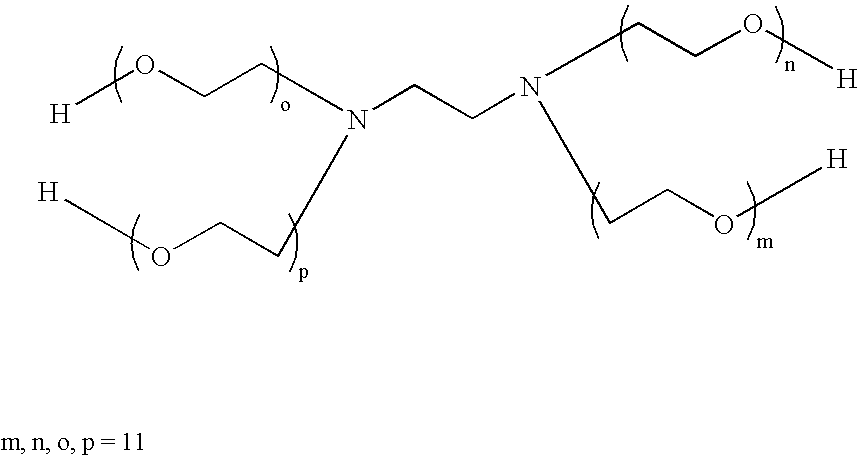Method of making a photopolymer printing plate
a printing plate and photopolymer technology, applied in the field of making lithographic printing plates, can solve the problems of inability to process on presses, lack of daylight stability, and inconvenience for end-users, and achieve the effects of improving the polymerization degree of exposed areas, reducing the cost of processing, and improving the quality of printing
- Summary
- Abstract
- Description
- Claims
- Application Information
AI Technical Summary
Benefits of technology
Problems solved by technology
Method used
Image
Examples
examples 1 and 2
[0089] In the examples 1 and 2 the invention is demonstrated for a violet sensitive photopolymerisable composition.
example 1
Preparation of the Printing Plate Precursor
Components Used in Example 1:
[0090] (A) A solution containing 32.4 wt. % of a methyl methacrylate / methacrylic acid-copolymer (ratio methylmethacrylate / methacrylic acid of 4:1 by weight; acid number: 110 mg KOH / g) in 2-butanone (viscosity 105 mm2 / s at 25° C.). [0091] (B) A solution containing 88.2 wt. % of a reaction product from 1 mole of 2,2,4-trimethyl-hexamethylenediisocyanate and 2 moles of hydroxyethylmethacrylate (viscosity 3.30 mm2 / s at 25° C.). [0092] (C) Mono Z1620, a solution in 2-butanone containing 30.1 wt. % of a reaction product from 1 mole of hexamethylenediisocyanate, 1 mole of 2-hydroxyethylmethacrylate and 0.5 mole of 2-(2-hydroxyethyl)-piperidine (viscosity 1.7 mm2 / s at 25° C.). [0093] (D) 1,4-distyryl-(3,5-trimethoxy, 4-(2-butyl)oxy)benzene. [0094] (E) Heliogene blue D 7490® dispersion (9.9 wt. %, viscosity 7.0 mm2 / s at 25° C.), trade name of BASF AG, as defined in EP 1 072 956. [0095] (F) 2,2′-Bis(2-chlorophenyl)-4,...
example 2
[0115] The imaging element as prepared in Example 1 was exposed at 500 μJ / cm2 using the same experimental platesetter as defined in Example 1, but without a pre-heat step. Next the plate was cleaned with the THERMOTECT gum solution (baking / gum solution commercially available from TECHNOVA). The non-image areas were removed by this cleaning step. The obtained image had a cyan density of 1.06 (measured with a GretagMacbeth D19C densitometer). The plate was tested on a Heidelberg GTO46 press and good prints were obtained.
PUM
| Property | Measurement | Unit |
|---|---|---|
| mol % | aaaaa | aaaaa |
| viscosity | aaaaa | aaaaa |
| viscosity | aaaaa | aaaaa |
Abstract
Description
Claims
Application Information
 Login to View More
Login to View More - R&D
- Intellectual Property
- Life Sciences
- Materials
- Tech Scout
- Unparalleled Data Quality
- Higher Quality Content
- 60% Fewer Hallucinations
Browse by: Latest US Patents, China's latest patents, Technical Efficacy Thesaurus, Application Domain, Technology Topic, Popular Technical Reports.
© 2025 PatSnap. All rights reserved.Legal|Privacy policy|Modern Slavery Act Transparency Statement|Sitemap|About US| Contact US: help@patsnap.com


